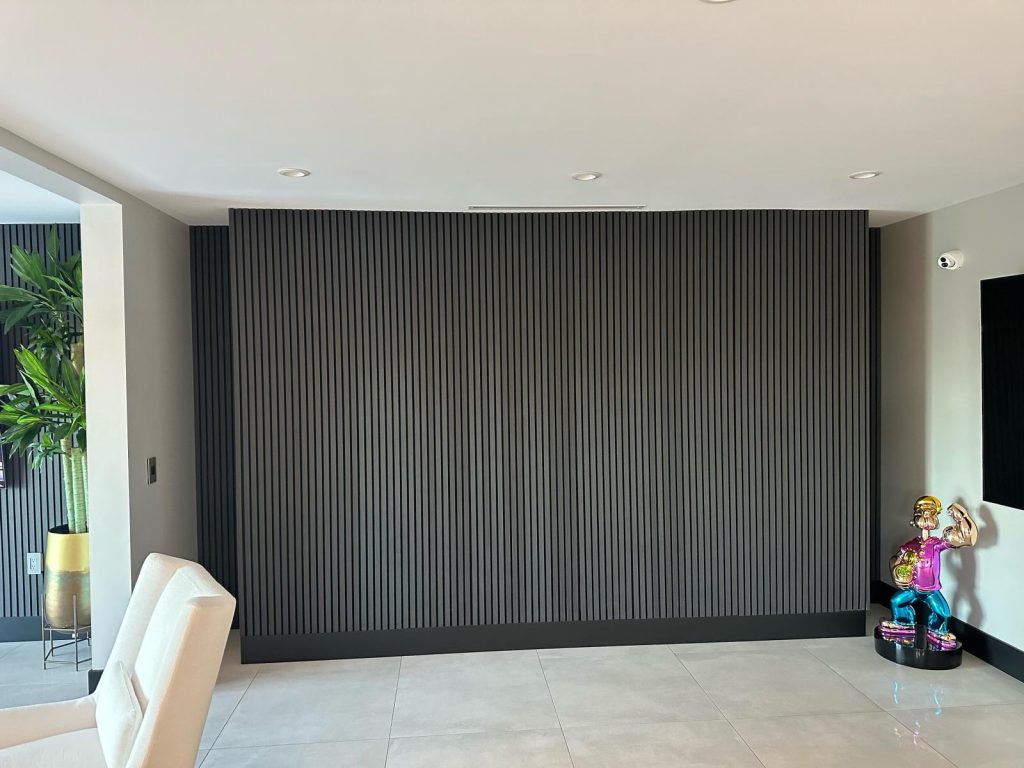PVC wall panels have gained popularity as a quick, affordable, and stylish way to upgrade interiors. While they offer undeniable convenience and aesthetic benefits, it’s essential to understand their potential drawbacks before making a purchase. In this article, we’ll dive deeply into the drawbacks of PVC wall panels, highlighting the aspects you should consider for an informed decision.
What Are PVC Wall Panels?
PVC (Polyvinyl Chloride) wall panels are lightweight, water-resistant materials often used in residential and commercial interiors. They come in various designs, including wood, marble, and tile textures, making them a versatile option for those seeking aesthetic appeal on a budget. However, beneath their attractive features, several limitations warrant consideration.
Drawbacks of PVC Wall Panels: Key Concerns
1. Durability Issues
PVC wall panels, while resistant to moisture, are less durable compared to materials like wood or stone. Over time, they may develop cracks, scratches, or dents, especially in high-traffic areas.
Why This Matters:
- Unlike wood panels, PVC lacks the resilience to withstand significant impact.
- Regular wear and tear can reduce their lifespan, making frequent replacements necessary.
Example: If you’re installing PVC panels in a hallway or commercial space, their vulnerability to scratches could lead to unsightly blemishes within a few months of use.
2. Limited Heat Resistance
PVC wall panels have low tolerance for heat, which can lead to warping or deformation if exposed to high temperatures.
Practical Concerns:
- Installing them in kitchens or areas near heating systems poses a risk.
- The panels may emit harmful chemicals when subjected to extreme heat.
Alternative Tip: Consider heat-resistant materials like wood wall panels for spaces exposed to heat or direct sunlight.
A Closer Look: PVC vs. Wood Wall Panels
| Feature | PVC Wall Panels | Wood Wall Panels |
|---|---|---|
| Durability | Susceptible to cracks and dents | Long-lasting with proper care |
| Aesthetic Appeal | Offers a range of styles, but less natural | Authentic, luxurious appearance |
| Heat Resistance | Low, prone to warping | High, withstands high temperatures |
| Environmental Impact | Non-biodegradable, difficult to recycle | Sustainable and eco-friendly |
3. Environmental Concerns
One of the most significant drawbacks of PVC wall panels is their environmental impact. Made from non-biodegradable plastic, these panels contribute to long-term waste issues.
Key Points to Consider:
- PVC is not easily recyclable, adding to landfill waste.
- The production process releases toxic chemicals, contributing to pollution.
For environmentally conscious homeowners, this aspect may outweigh the convenience and cost-effectiveness of PVC panels.
Health Hazards Associated with PVC Panels
4. Potential for Harmful Emissions
PVC wall panels can release volatile organic compounds (VOCs) and other harmful chemicals over time. This issue becomes more pronounced when panels are installed in poorly ventilated spaces.
Health Risks:
- Long-term exposure to VOCs can lead to respiratory problems.
- Low-quality PVC panels may emit a noticeable chemical smell, which can be unpleasant and hazardous.
Solution: If you choose PVC, opt for high-quality panels certified as low-VOC to minimize health risks.
5. Aesthetic Limitations Over Time
While PVC wall panels offer an attractive appearance initially, they tend to lose their charm as they age. Fading colors, peeling, and surface degradation are common issues.
Maintenance Challenges:
- Frequent cleaning and care are required to maintain their look.
- Unlike wood, PVC panels cannot be sanded or refinished to restore their original beauty.
Pro Tip: For long-term use, consider alternative materials like wood or MDF panels, which retain their aesthetic appeal over time.
Common Applications and Associated Drawbacks
Bathrooms and Kitchens
PVC wall panels are popular in moisture-prone areas like bathrooms and kitchens due to their water resistance. However, their susceptibility to heat and limited durability can be problematic in these spaces.
Example: In kitchens, proximity to stoves or ovens can cause warping, while heavy cleaning agents may degrade their finish.
Living Rooms and Bedrooms
While PVC panels can add a modern touch to living spaces, their artificial texture may not appeal to those seeking a natural look. Over time, scratches and discoloration can diminish their aesthetic value.
FAQs
Can PVC wall panels be recycled?
Recycling PVC panels is challenging due to their chemical composition. They often end up in landfills, contributing to environmental concerns.
Are PVC wall panels safe for homes with children?
While generally safe, low-quality PVC panels may emit harmful VOCs. Opt for certified, low-VOC panels to ensure safety.
Can I install PVC panels in outdoor spaces?
PVC panels are not suitable for outdoor use as prolonged exposure to sunlight and heat can cause warping and discoloration.
How do PVC panels compare to wood panels in terms of cost?
PVC panels are more affordable upfront, but wood panels offer better long-term value due to their durability and aesthetic longevity.
Do PVC panels require professional installation?
PVC panels are easy to install and can be a DIY project. However, professional installation may ensure better results, especially in tricky spaces.
Final Thoughts
While PVC wall panels offer affordability, water resistance, and ease of installation, their drawbacks—including durability issues, environmental impact, and aesthetic limitations—make them less ideal for long-term use. By understanding these factors, you can decide whether PVC panels align with your needs or if alternatives like wood wall panels are a better fit.








